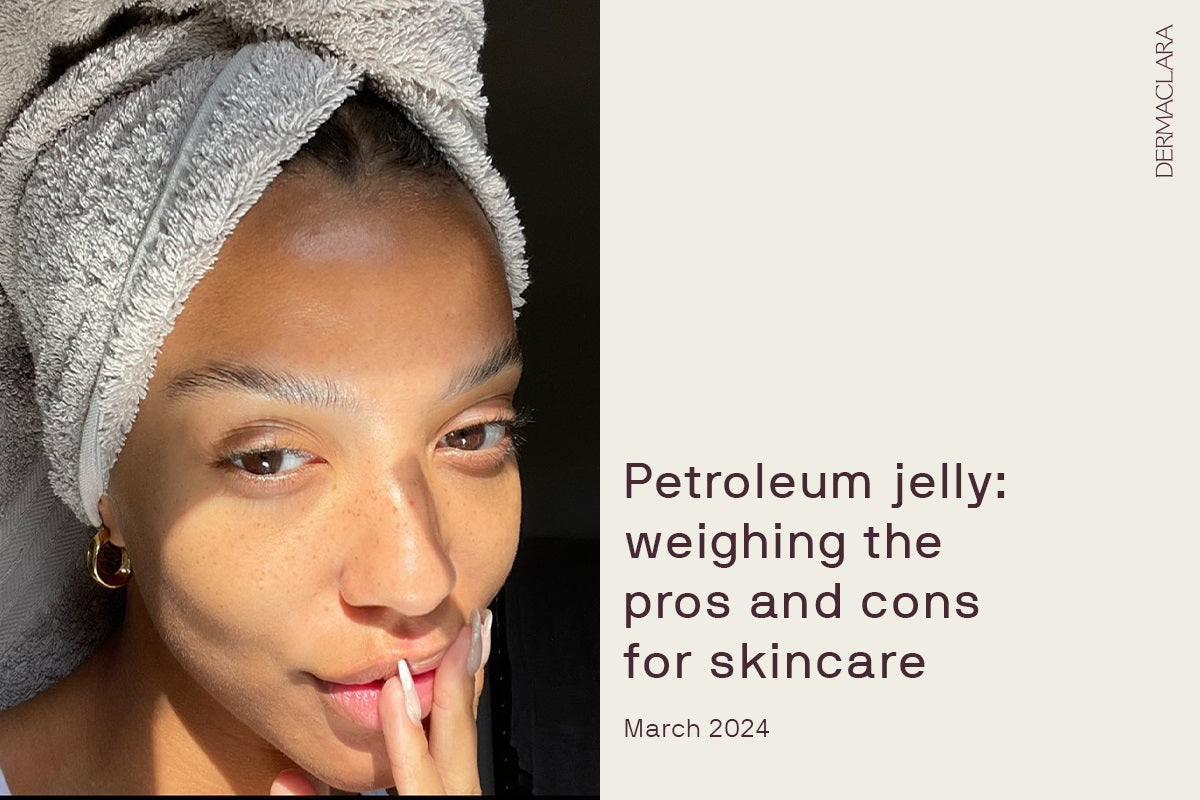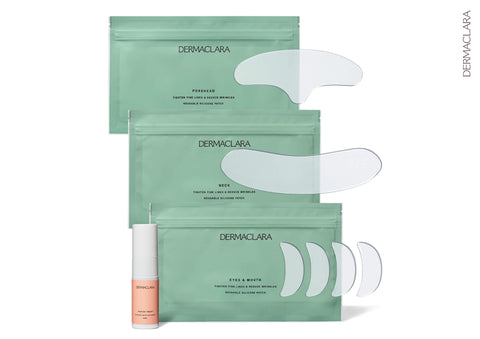Petroleum Jelly: Weighing the Pros and Cons for Skincare

It’s time to officially unravel all of the pros and cons of petroleum jelly. We know you want to know! Is petroleum jelly good for skin? Or is petroleum jelly bad for you? We know you want to know, and you know we have the answers. So, let’s get into it.
What Is Petroleum Jelly Made of?
The answer to “What is petroleum jelly made of?” is simple yet complicated. Petroleum jelly, often recognized by its brand name Vaseline, is a petroleum derivative, a byproduct of the oil refining process. It primarily consists of a mixture of hydrocarbons, like paraffin wax or mineral oils. These ingredients undergo a refining process to remove impurities, resulting in a thick, gooey substance.

What Is Petroleum Jelly Used for?
Petroleum jelly uses are pretty diverse, but its most common application is as a moisturizer for dry, chapped skin. Whether it's rough elbows, cracked heels, or chafed lips, petroleum jelly provides a protective barrier that helps lock in moisture and promote healing. Beyond moisturizing, it's utilized in various skincare products, such as lip balms, diaper rash creams, and even hair care treatments.
If you were wondering, “Is petroleum jelly good for burns?” It is! Its versatility extends to soothing burns, minor cuts, and scrapes. Petroleum jelly is a barrier against external irritants while helping the skin heal.
What Does Petroleum Jelly Do?
At its core, petroleum jelly acts as an occlusive agent, meaning it forms a barrier on the skin's surface that prevents moisture loss. This barrier not only hydrates the skin but also protects it from environmental factors like wind and cold weather. Think of it like a protective coat that somehow hydrated you!
Top Benefits of Petroleum Jelly
Now that we understand petroleum jelly and how it works, let’s do a quick run-through of the top benefits of petroleum jelly on the skin.
- Locks in moisture, keeping the skin hydrated and preventing dryness.
- It forms a protective barrier on the skin, shielding against environmental stressors.
- Soothes dry, chapped skin, providing relief and promoting healing.
- Effective remedy for minor cuts, burns, and scrapes, offering comfort and protection during the healing process.
- Hypoallergenic properties make it suitable for sensitive skin.
- It is a common ingredient in skincare products due to its moisturizing and emollient properties.
Is Petroleum Jelly Good for Your Face
So, now you’re wondering, “can i use petroleum jelly on my face?” The answer is kind of. Using petroleum jelly on your face can be a bit of a mixed bag. On one hand, its occlusive properties create a protective barrier that helps lock in moisture, making it beneficial for those with dry or sensitive skin. It can also provide temporary relief for flakiness or irritation. However, its heavy texture may not suit everyone, especially those prone to acne or oily skin. Some people find it too greasy on the face, potentially leading to breakouts or discomfort. As with any skincare product, it's essential to patch-test first and monitor how your skin reacts before incorporating it into your routine.
Does Petroleum Jelly Clog Pores
One common concern about using petroleum jelly on the face is whether it clogs pores. While petroleum jelly is non-comedogenic, meaning it doesn't inherently block pores, its occlusive nature can trap debris and bacteria if not properly removed. This can exacerbate acne or other skin issues, especially those with already congested skin. Proper cleansing is crucial to prevent buildup and maintain clear pores when using petroleum jelly on the face.
Petroleum Jelly for Eczema
If you have eczema, petroleum jelly can help soothe dry, itchy skin. It helps lock in moisture, soothe irritation, and create a protective barrier against environmental triggers. Applying petroleum jelly to eczema-prone areas after bathing or showering can also help replenish lost moisture and alleviate discomfort. But it's best to talk to a dermatologist to make sure it's the right choice for managing your eczema.
Petroleum Jelly Skincare Routine
Incorporating petroleum jelly into your skincare routine can yield impressive results. Follow our guide below to begin benefitting from petroleum jelly.
Step 1: Cleanse
Start by cleansing your face with a gentle cleanser to remove dirt, oil, and makeup.
Step 2: Exfoliate
If desired, exfoliate your skin to remove dead skin cells and reveal a smoother complexion.
Step 3: Apply Dermaclara Silicone Patches
Place your Dermaclara patches onto targeted areas and leave them on for at least 15 minutes. Patches enhance and deepen the effects of serums, moisturizers, and petroleum jelly.

Step 4: Apply Serum
Follow up with your preferred serum for increased hydration, brightening, or anti-aging.
Step 5: Apply Petroleum Jelly
Gently massage a small amount of petroleum jelly onto damp skin, focusing on areas prone to dryness or irritation.
Step 6: Finish with Moisturizer
Seal in the benefits of petroleum jelly by applying a lightweight moisturizer to the rest of your face and neck.
Step 7: Sunscreen (Daytime)
Remember to apply sunscreen daily to protect your skin from harmful UV rays.
Your skin will feel completely different before and after petroleum jelly. Get ready for supple, soft, and moist skin.
What Are the Disadvantages of Petroleum Jelly on Face?
Despite its many benefits, there are some potential petroleum jelly side effects. Before incorporating it into your skincare routine consider the petroleum jelly dangers listed below.
- Prolonged use may lead to skin irritation, especially in individuals with sensitive or acne-prone skin.
- Occlusive properties can trap dirt and bacteria, potentially exacerbating breakouts if not properly cleansed.
- Concerns about potential contamination with polycyclic aromatic hydrocarbons (PAHs), though medical-grade petroleum jelly undergoes stringent purification processes to minimize this risk.
Now, you know both sides of the story and can decide what pathway works best for you, your skin, and your skincare goals.
Leave a comment